Adventure Travel · Argentina · Chile · Ecuador · Peru · Regions · South America · Speciality Travel
South American whale watching: 6 astounding sites
Hands down, there’s no better destination to enjoy whale-watching than South America. As we now begin planning our next vacations, dozens of tours are still available across the region, granting you the chance to see these majestic marine mammals flourishing in their natural habitat. No matter where or when you’re visiting the continent, be sure to include a whale-watching expedition on your South American itinerary – it’s definitely one for the bucket list!
 For such an experience, we’re sharing our list of some of the top destinations that would make Ahab himself envious:
1. Tierra del Fuego, Ushuaia, Argentina
With a name as dramatic as “Land of Fire,” you know you can expect something rather out of this world from Tierra del Fuego. Cast away on the southernmost tip of South America, this rugged archipelago encapsulates Patagonia at its wildest, making for an otherworldly stomping ground that adventurers will find hard to resist.
For such an experience, we’re sharing our list of some of the top destinations that would make Ahab himself envious:
1. Tierra del Fuego, Ushuaia, Argentina
With a name as dramatic as “Land of Fire,” you know you can expect something rather out of this world from Tierra del Fuego. Cast away on the southernmost tip of South America, this rugged archipelago encapsulates Patagonia at its wildest, making for an otherworldly stomping ground that adventurers will find hard to resist.
 In this region, the frontier town of Ushuaia occupies the final settlement before the wild, end-of-the-world wilderness takes over. The town is the base of choice for explorations into Tierra del Fuego National Park, whose craggy, frosted mountains keep watch over the sweeping steppe and windswept trees; a landscape that is indeed as dramatic as its name. Travelers venture here with the hope of being among the rare few to witness one of the most enthralling sights anywhere on earth: Whales in their natural habitat. Benefiting from the sheltered waters, an abundance of krill and minerals, and an underwater topography that allows these giants to move close to shore, the chances of a sighting them are excellent – especially during the Southern Hemisphere’s summer months of December through March, when whales migrate around Cape Horn to mate and give birth.
In this region, the frontier town of Ushuaia occupies the final settlement before the wild, end-of-the-world wilderness takes over. The town is the base of choice for explorations into Tierra del Fuego National Park, whose craggy, frosted mountains keep watch over the sweeping steppe and windswept trees; a landscape that is indeed as dramatic as its name. Travelers venture here with the hope of being among the rare few to witness one of the most enthralling sights anywhere on earth: Whales in their natural habitat. Benefiting from the sheltered waters, an abundance of krill and minerals, and an underwater topography that allows these giants to move close to shore, the chances of a sighting them are excellent – especially during the Southern Hemisphere’s summer months of December through March, when whales migrate around Cape Horn to mate and give birth.
 The most frequent sightings are of Southern right whales, followed by Humpback whales, Blue whales, Grey whales, Southern minkes, Southern fins, and Southern sei whales. Close to Ushuaia, orcas (killer whales) have also been seen.
Whale-watching season: December through March
2. Chiloé, Chile
Considering that the story of Moby Dick is linked to Chile’s Pacific Coast, you shouldn’t be surprised that this country provides you a menu of whale-watching hotspots. If you’re planning a vacation in Chile anytime from December to May, you can head for the country’s long stretch of coast to the island of Chiloé, a marine-life-rich spot where Blue whales reside from late January to April.
The most frequent sightings are of Southern right whales, followed by Humpback whales, Blue whales, Grey whales, Southern minkes, Southern fins, and Southern sei whales. Close to Ushuaia, orcas (killer whales) have also been seen.
Whale-watching season: December through March
2. Chiloé, Chile
Considering that the story of Moby Dick is linked to Chile’s Pacific Coast, you shouldn’t be surprised that this country provides you a menu of whale-watching hotspots. If you’re planning a vacation in Chile anytime from December to May, you can head for the country’s long stretch of coast to the island of Chiloé, a marine-life-rich spot where Blue whales reside from late January to April.
 From their soothing sounds and unique tail prints akin to human fingerprints, to their massive size (reaching a maximum confirmed length of 98 feet s [29.9 meters] and weighing up to 199 tons [196 long tons; 219 short tons]) and long lifespans (up to 100 years), these whales seem to sing a siren song to humanity. There’s just something special about seeing them in their natural habitat, and that habitat is quite large given their migration patterns — the longest migrations in the world! Take a boat trip or see the whales in the distance from the coast, then explore Chiloé Island’s rolling countryside and peaceful coves.
From their soothing sounds and unique tail prints akin to human fingerprints, to their massive size (reaching a maximum confirmed length of 98 feet s [29.9 meters] and weighing up to 199 tons [196 long tons; 219 short tons]) and long lifespans (up to 100 years), these whales seem to sing a siren song to humanity. There’s just something special about seeing them in their natural habitat, and that habitat is quite large given their migration patterns — the longest migrations in the world! Take a boat trip or see the whales in the distance from the coast, then explore Chiloé Island’s rolling countryside and peaceful coves.
 Whale-watching season: December to May
3. Machalilla National Park, Ecuador
Anywhere from 400 to several thousand Humpback whales migrate from the Antarctic every year to areas off Ecuador’s Pacific coast. From June to October, these magnificent creatures give birth to their calves, availing themselves of the warm waters and abundant feeding grounds provided by nutrient-rich waters carried to the region by the ocean’s Humboldt Current.
Whale-watching season: December to May
3. Machalilla National Park, Ecuador
Anywhere from 400 to several thousand Humpback whales migrate from the Antarctic every year to areas off Ecuador’s Pacific coast. From June to October, these magnificent creatures give birth to their calves, availing themselves of the warm waters and abundant feeding grounds provided by nutrient-rich waters carried to the region by the ocean’s Humboldt Current.
 For spotting these 25-30-ton goliaths — along with 27 other species of whales and dolphins — Machalilla National Park is an especially rewarding spot to serve as your base.
For spotting these 25-30-ton goliaths — along with 27 other species of whales and dolphins — Machalilla National Park is an especially rewarding spot to serve as your base.
 Most organized whale-watching tours depart from the nearby fishing village of Puerto Lopez, located just a bit south of the park. From there, adventurers cruise past the park’s Isla de la Plata (“Silver Island” in Spanish). Known as “Little Galapagos,” this islet boasts an ecosystem similar to that of its pristine big-brother archipelago, as both are nesting sites for the iconic Blue-footed booby. Sailing in this area, it’s possible to sight large numbers of whales swimming to and from the island. Note, though, that the whale watching infrastructure serving the island and across Machalilla National Park is actually superior to that of the Galapagos. When planning your vacation, keep in mind that Puerto Lopez holds an annual whale watching festival, typically in June.
Whale-watching season: June to October
4. Galapagos Islands, Ecuador
A tailor-made adventure tour to the Galapagos Islands of Ecuador is a must for any budding scientist or nature-lover, what with their exceptional landscapes and marine life. The archipelago, made up of 13 main islands encircled by swathes of azure sea, is famous for its totally unique endemic species that were paramount in the development of Charles Darwin’s evolution theory.
Most organized whale-watching tours depart from the nearby fishing village of Puerto Lopez, located just a bit south of the park. From there, adventurers cruise past the park’s Isla de la Plata (“Silver Island” in Spanish). Known as “Little Galapagos,” this islet boasts an ecosystem similar to that of its pristine big-brother archipelago, as both are nesting sites for the iconic Blue-footed booby. Sailing in this area, it’s possible to sight large numbers of whales swimming to and from the island. Note, though, that the whale watching infrastructure serving the island and across Machalilla National Park is actually superior to that of the Galapagos. When planning your vacation, keep in mind that Puerto Lopez holds an annual whale watching festival, typically in June.
Whale-watching season: June to October
4. Galapagos Islands, Ecuador
A tailor-made adventure tour to the Galapagos Islands of Ecuador is a must for any budding scientist or nature-lover, what with their exceptional landscapes and marine life. The archipelago, made up of 13 main islands encircled by swathes of azure sea, is famous for its totally unique endemic species that were paramount in the development of Charles Darwin’s evolution theory.
 For whale-watching destinations, no list is complete without this wondrous archipelago. Similar in many ways to Machalilla National Park (also in Ecuador), the Galapagos’ nutrient-rich waters allow some whale species to live year-round, meaning that it’s possible to go whale-watching at any time of the year. However, July through November is considered the best time to spot a large variety of the marine giants due to the particularly dense nutrients brought in by the Humboldt Current.
For whale-watching destinations, no list is complete without this wondrous archipelago. Similar in many ways to Machalilla National Park (also in Ecuador), the Galapagos’ nutrient-rich waters allow some whale species to live year-round, meaning that it’s possible to go whale-watching at any time of the year. However, July through November is considered the best time to spot a large variety of the marine giants due to the particularly dense nutrients brought in by the Humboldt Current.
 The best places to see whales — including Humpbacks, Orcas, Blue, Fin, Bryde’s, short-finned Pilot whales, and Sperm whales in pods of more than 20 — is around Isabela, Fernandina, Wolf, and Darwin.
The best places to see whales — including Humpbacks, Orcas, Blue, Fin, Bryde’s, short-finned Pilot whales, and Sperm whales in pods of more than 20 — is around Isabela, Fernandina, Wolf, and Darwin.
 Whale sharks also can be viewed in the Galapagos, and this naturally curious species will often approach boats to investigate and give whale-watchers unexpected up-close encounters. Of course, you won’t want to miss the rest of the destination that top’s more people’s bucket lists than any other in the world.
Whale-watching season: Year-round (but especially July through November)
5. Mancora, Peru
In the northern waters of Peru’s Pacific Coast, a magical current called Humboldt allows for an incredibly biodiverse ecosystem. The extreme cold of the Humboldt current collides with the warm Pacific to create an ideal habitat for an array of oceanic species. In these Peruvian waters you’ll find a whopping 32 species of whales and dolphins, which include orcas, Bryde’s whales, pantropical spotted dolphins, dusky dolphins, and Humpback whales.
Whale sharks also can be viewed in the Galapagos, and this naturally curious species will often approach boats to investigate and give whale-watchers unexpected up-close encounters. Of course, you won’t want to miss the rest of the destination that top’s more people’s bucket lists than any other in the world.
Whale-watching season: Year-round (but especially July through November)
5. Mancora, Peru
In the northern waters of Peru’s Pacific Coast, a magical current called Humboldt allows for an incredibly biodiverse ecosystem. The extreme cold of the Humboldt current collides with the warm Pacific to create an ideal habitat for an array of oceanic species. In these Peruvian waters you’ll find a whopping 32 species of whales and dolphins, which include orcas, Bryde’s whales, pantropical spotted dolphins, dusky dolphins, and Humpback whales.
 In fact, thousands of Humpback whales come to breed off the country’s north coast between mid-July and early November, with the small fishing village of Mancora being the best spot to catch a glimpse of these genuinely majestic souls as they splash and play with their newborns. If you’re lucky, you might see a Humpback from the shore, but a boat tour will get you far closer. Many tour boats will also offer a listen on their hydrophone to hear the whales’ hauntingly beautiful calls.
In fact, thousands of Humpback whales come to breed off the country’s north coast between mid-July and early November, with the small fishing village of Mancora being the best spot to catch a glimpse of these genuinely majestic souls as they splash and play with their newborns. If you’re lucky, you might see a Humpback from the shore, but a boat tour will get you far closer. Many tour boats will also offer a listen on their hydrophone to hear the whales’ hauntingly beautiful calls.
 Whale-watching season: Mid-July to early November
6. Valdez Peninsula / Puerto Madryn, Argentina
At the end of the day, Argentina reigns as South America’s leading whale-watching destination, and there’s only one area in Argentina to really get a good whale experience: Around the Valdez Peninsular and the nearby small town of Puerto Madryn. Offering a spectacular sight that few other wildlife sightings can match, the spotlight is always on Southern right whales, which arrive by the hundreds from Antarctica and can be seen in the waters off the peninsula annually between June and December. At the height of the whale watching season, these 60-foot-long 50-ton giants of the southern seas congregate in this area to mate as well as birth and nurse their calves.
Whale-watching season: Mid-July to early November
6. Valdez Peninsula / Puerto Madryn, Argentina
At the end of the day, Argentina reigns as South America’s leading whale-watching destination, and there’s only one area in Argentina to really get a good whale experience: Around the Valdez Peninsular and the nearby small town of Puerto Madryn. Offering a spectacular sight that few other wildlife sightings can match, the spotlight is always on Southern right whales, which arrive by the hundreds from Antarctica and can be seen in the waters off the peninsula annually between June and December. At the height of the whale watching season, these 60-foot-long 50-ton giants of the southern seas congregate in this area to mate as well as birth and nurse their calves.
 Featuring dark, grayish and blackish bodies, heavy and with no dorsal fins, Southern right whales can even be seen within just feet of the shore. Still, even closer encounters are experienced on boat tours and land excursions, which provide the added opportunity to witness lumbering elephant seals, curious sea lions and expansive colonies of Magellan penguins.
Featuring dark, grayish and blackish bodies, heavy and with no dorsal fins, Southern right whales can even be seen within just feet of the shore. Still, even closer encounters are experienced on boat tours and land excursions, which provide the added opportunity to witness lumbering elephant seals, curious sea lions and expansive colonies of Magellan penguins.
 In addition to whale watching, Valdes Peninsula remains one of the most exciting places to observe playful orcas in the wild, due to the abundance of prey, particularly seal pups. The best time to witness orcas up close as they hunt is during October and November, when they venture closer to shore to feed on sea lion pups. For those with the stomach, you marvel at the spectacle of Killer Whales launching themselves onto the sand to attack their prey, often unsuspecting seals which are frolicking in the shallow waters. This is an unusual hunting method that doesn’t occur anywhere else, which you can watch between December and April from the sand dunes – though you might not believe your eyes.
As a base for such adventure on Patagonia’s rugged Peninsula Valdes, head to the coastal town of Puerto Madryn, where it’s even possible to wander along the shoreline and witness young whale mothers with their calves only twenty feet away in the water!
Whale-watching season: June to December
In addition to whale watching, Valdes Peninsula remains one of the most exciting places to observe playful orcas in the wild, due to the abundance of prey, particularly seal pups. The best time to witness orcas up close as they hunt is during October and November, when they venture closer to shore to feed on sea lion pups. For those with the stomach, you marvel at the spectacle of Killer Whales launching themselves onto the sand to attack their prey, often unsuspecting seals which are frolicking in the shallow waters. This is an unusual hunting method that doesn’t occur anywhere else, which you can watch between December and April from the sand dunes – though you might not believe your eyes.
As a base for such adventure on Patagonia’s rugged Peninsula Valdes, head to the coastal town of Puerto Madryn, where it’s even possible to wander along the shoreline and witness young whale mothers with their calves only twenty feet away in the water!
Whale-watching season: June to December
 Nothing quite prepares you for the sheer awe of watching an enormous whale swimming right in front of you, and that’s precisely what you’ll experience on whale-watching tours throughout South America. Just prepare yourself to see one or two of them breach the waters – the holy grail of whale sightings. It’s a once-in-a-lifetime sight to behold!
Alfonso Tandazo is President and CEO at Surtrek Tour Operator. Surtrek Tour Operator is a well-established firm, specializing in custom-designed luxury tours in Ecuador, the Galapagos and throughout the rest of South America.
If you would like to be a guest blogger on A Luxury Travel Blog in order to raise your profile, please contact us.
Nothing quite prepares you for the sheer awe of watching an enormous whale swimming right in front of you, and that’s precisely what you’ll experience on whale-watching tours throughout South America. Just prepare yourself to see one or two of them breach the waters – the holy grail of whale sightings. It’s a once-in-a-lifetime sight to behold!
Alfonso Tandazo is President and CEO at Surtrek Tour Operator. Surtrek Tour Operator is a well-established firm, specializing in custom-designed luxury tours in Ecuador, the Galapagos and throughout the rest of South America.
If you would like to be a guest blogger on A Luxury Travel Blog in order to raise your profile, please contact us.
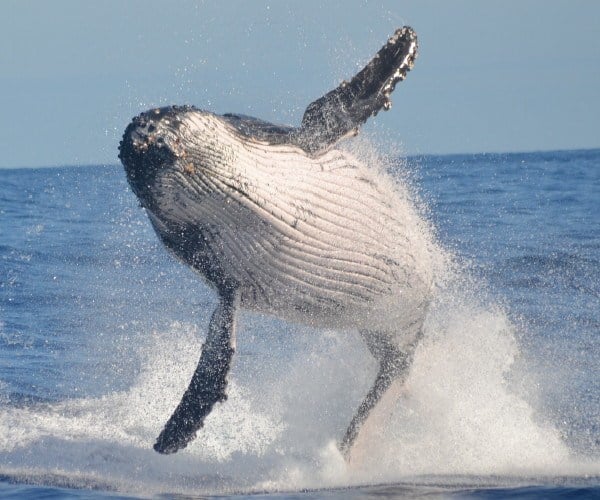 For such an experience, we’re sharing our list of some of the top destinations that would make Ahab himself envious:
1. Tierra del Fuego, Ushuaia, Argentina
With a name as dramatic as “Land of Fire,” you know you can expect something rather out of this world from Tierra del Fuego. Cast away on the southernmost tip of South America, this rugged archipelago encapsulates Patagonia at its wildest, making for an otherworldly stomping ground that adventurers will find hard to resist.
For such an experience, we’re sharing our list of some of the top destinations that would make Ahab himself envious:
1. Tierra del Fuego, Ushuaia, Argentina
With a name as dramatic as “Land of Fire,” you know you can expect something rather out of this world from Tierra del Fuego. Cast away on the southernmost tip of South America, this rugged archipelago encapsulates Patagonia at its wildest, making for an otherworldly stomping ground that adventurers will find hard to resist.
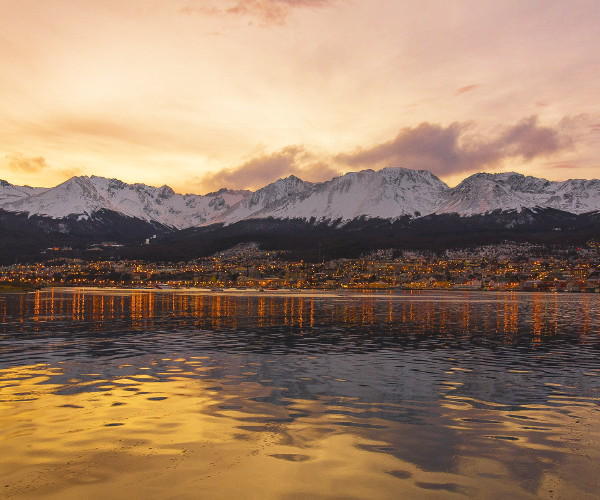 In this region, the frontier town of Ushuaia occupies the final settlement before the wild, end-of-the-world wilderness takes over. The town is the base of choice for explorations into Tierra del Fuego National Park, whose craggy, frosted mountains keep watch over the sweeping steppe and windswept trees; a landscape that is indeed as dramatic as its name. Travelers venture here with the hope of being among the rare few to witness one of the most enthralling sights anywhere on earth: Whales in their natural habitat. Benefiting from the sheltered waters, an abundance of krill and minerals, and an underwater topography that allows these giants to move close to shore, the chances of a sighting them are excellent – especially during the Southern Hemisphere’s summer months of December through March, when whales migrate around Cape Horn to mate and give birth.
In this region, the frontier town of Ushuaia occupies the final settlement before the wild, end-of-the-world wilderness takes over. The town is the base of choice for explorations into Tierra del Fuego National Park, whose craggy, frosted mountains keep watch over the sweeping steppe and windswept trees; a landscape that is indeed as dramatic as its name. Travelers venture here with the hope of being among the rare few to witness one of the most enthralling sights anywhere on earth: Whales in their natural habitat. Benefiting from the sheltered waters, an abundance of krill and minerals, and an underwater topography that allows these giants to move close to shore, the chances of a sighting them are excellent – especially during the Southern Hemisphere’s summer months of December through March, when whales migrate around Cape Horn to mate and give birth.
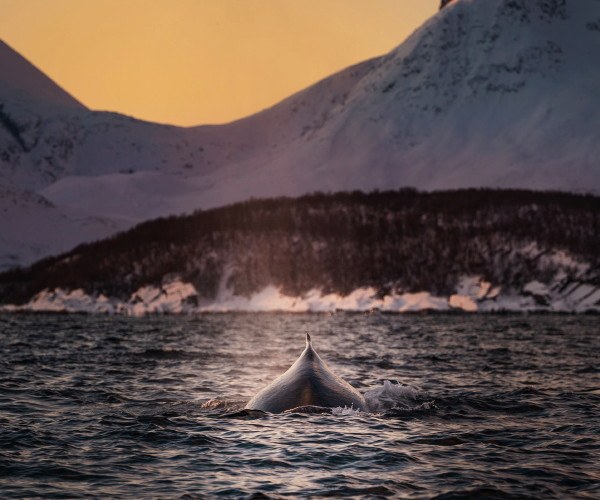 The most frequent sightings are of Southern right whales, followed by Humpback whales, Blue whales, Grey whales, Southern minkes, Southern fins, and Southern sei whales. Close to Ushuaia, orcas (killer whales) have also been seen.
Whale-watching season: December through March
2. Chiloé, Chile
Considering that the story of Moby Dick is linked to Chile’s Pacific Coast, you shouldn’t be surprised that this country provides you a menu of whale-watching hotspots. If you’re planning a vacation in Chile anytime from December to May, you can head for the country’s long stretch of coast to the island of Chiloé, a marine-life-rich spot where Blue whales reside from late January to April.
The most frequent sightings are of Southern right whales, followed by Humpback whales, Blue whales, Grey whales, Southern minkes, Southern fins, and Southern sei whales. Close to Ushuaia, orcas (killer whales) have also been seen.
Whale-watching season: December through March
2. Chiloé, Chile
Considering that the story of Moby Dick is linked to Chile’s Pacific Coast, you shouldn’t be surprised that this country provides you a menu of whale-watching hotspots. If you’re planning a vacation in Chile anytime from December to May, you can head for the country’s long stretch of coast to the island of Chiloé, a marine-life-rich spot where Blue whales reside from late January to April.
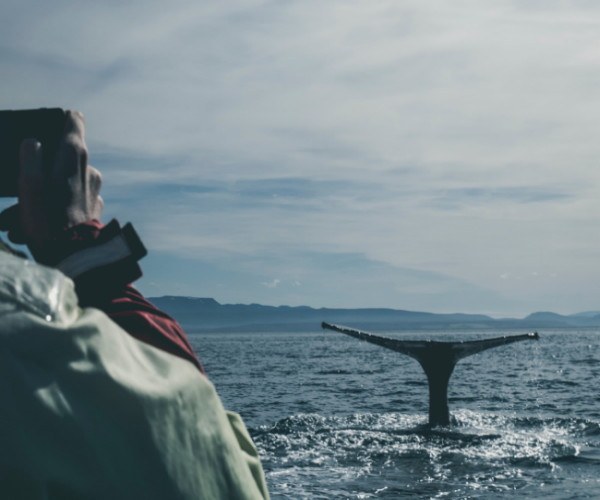 From their soothing sounds and unique tail prints akin to human fingerprints, to their massive size (reaching a maximum confirmed length of 98 feet s [29.9 meters] and weighing up to 199 tons [196 long tons; 219 short tons]) and long lifespans (up to 100 years), these whales seem to sing a siren song to humanity. There’s just something special about seeing them in their natural habitat, and that habitat is quite large given their migration patterns — the longest migrations in the world! Take a boat trip or see the whales in the distance from the coast, then explore Chiloé Island’s rolling countryside and peaceful coves.
From their soothing sounds and unique tail prints akin to human fingerprints, to their massive size (reaching a maximum confirmed length of 98 feet s [29.9 meters] and weighing up to 199 tons [196 long tons; 219 short tons]) and long lifespans (up to 100 years), these whales seem to sing a siren song to humanity. There’s just something special about seeing them in their natural habitat, and that habitat is quite large given their migration patterns — the longest migrations in the world! Take a boat trip or see the whales in the distance from the coast, then explore Chiloé Island’s rolling countryside and peaceful coves.
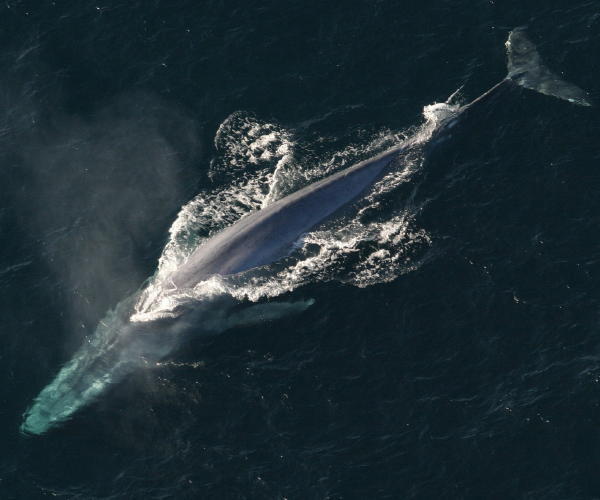 Whale-watching season: December to May
3. Machalilla National Park, Ecuador
Anywhere from 400 to several thousand Humpback whales migrate from the Antarctic every year to areas off Ecuador’s Pacific coast. From June to October, these magnificent creatures give birth to their calves, availing themselves of the warm waters and abundant feeding grounds provided by nutrient-rich waters carried to the region by the ocean’s Humboldt Current.
Whale-watching season: December to May
3. Machalilla National Park, Ecuador
Anywhere from 400 to several thousand Humpback whales migrate from the Antarctic every year to areas off Ecuador’s Pacific coast. From June to October, these magnificent creatures give birth to their calves, availing themselves of the warm waters and abundant feeding grounds provided by nutrient-rich waters carried to the region by the ocean’s Humboldt Current.
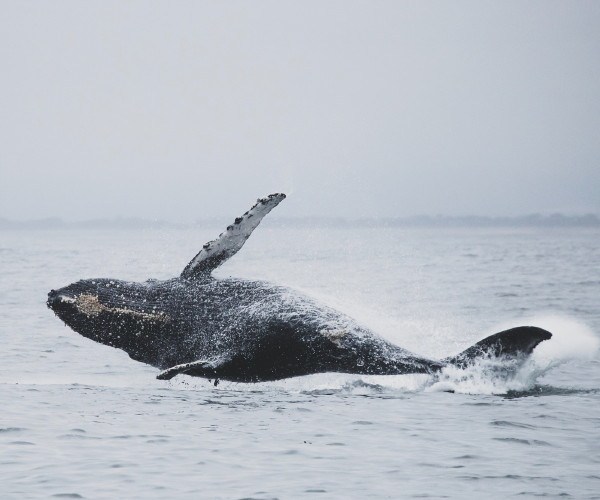 For spotting these 25-30-ton goliaths — along with 27 other species of whales and dolphins — Machalilla National Park is an especially rewarding spot to serve as your base.
For spotting these 25-30-ton goliaths — along with 27 other species of whales and dolphins — Machalilla National Park is an especially rewarding spot to serve as your base.
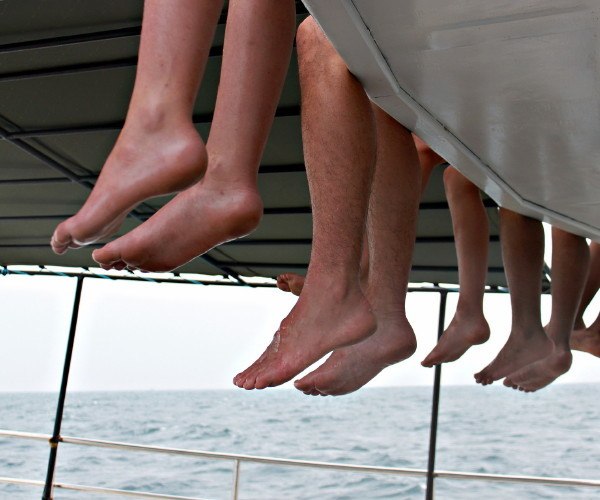 Most organized whale-watching tours depart from the nearby fishing village of Puerto Lopez, located just a bit south of the park. From there, adventurers cruise past the park’s Isla de la Plata (“Silver Island” in Spanish). Known as “Little Galapagos,” this islet boasts an ecosystem similar to that of its pristine big-brother archipelago, as both are nesting sites for the iconic Blue-footed booby. Sailing in this area, it’s possible to sight large numbers of whales swimming to and from the island. Note, though, that the whale watching infrastructure serving the island and across Machalilla National Park is actually superior to that of the Galapagos. When planning your vacation, keep in mind that Puerto Lopez holds an annual whale watching festival, typically in June.
Whale-watching season: June to October
4. Galapagos Islands, Ecuador
A tailor-made adventure tour to the Galapagos Islands of Ecuador is a must for any budding scientist or nature-lover, what with their exceptional landscapes and marine life. The archipelago, made up of 13 main islands encircled by swathes of azure sea, is famous for its totally unique endemic species that were paramount in the development of Charles Darwin’s evolution theory.
Most organized whale-watching tours depart from the nearby fishing village of Puerto Lopez, located just a bit south of the park. From there, adventurers cruise past the park’s Isla de la Plata (“Silver Island” in Spanish). Known as “Little Galapagos,” this islet boasts an ecosystem similar to that of its pristine big-brother archipelago, as both are nesting sites for the iconic Blue-footed booby. Sailing in this area, it’s possible to sight large numbers of whales swimming to and from the island. Note, though, that the whale watching infrastructure serving the island and across Machalilla National Park is actually superior to that of the Galapagos. When planning your vacation, keep in mind that Puerto Lopez holds an annual whale watching festival, typically in June.
Whale-watching season: June to October
4. Galapagos Islands, Ecuador
A tailor-made adventure tour to the Galapagos Islands of Ecuador is a must for any budding scientist or nature-lover, what with their exceptional landscapes and marine life. The archipelago, made up of 13 main islands encircled by swathes of azure sea, is famous for its totally unique endemic species that were paramount in the development of Charles Darwin’s evolution theory.
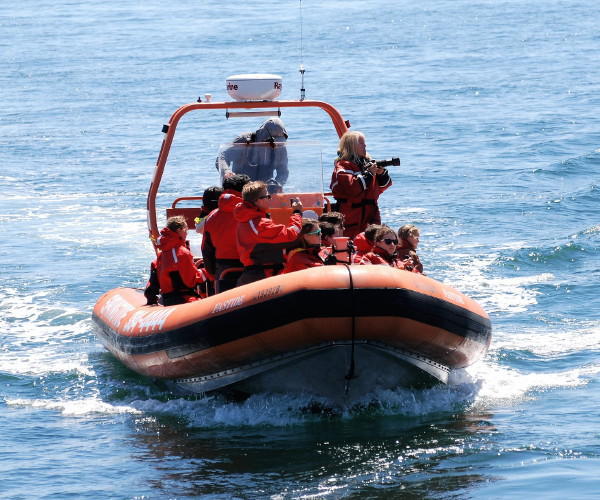 For whale-watching destinations, no list is complete without this wondrous archipelago. Similar in many ways to Machalilla National Park (also in Ecuador), the Galapagos’ nutrient-rich waters allow some whale species to live year-round, meaning that it’s possible to go whale-watching at any time of the year. However, July through November is considered the best time to spot a large variety of the marine giants due to the particularly dense nutrients brought in by the Humboldt Current.
For whale-watching destinations, no list is complete without this wondrous archipelago. Similar in many ways to Machalilla National Park (also in Ecuador), the Galapagos’ nutrient-rich waters allow some whale species to live year-round, meaning that it’s possible to go whale-watching at any time of the year. However, July through November is considered the best time to spot a large variety of the marine giants due to the particularly dense nutrients brought in by the Humboldt Current.
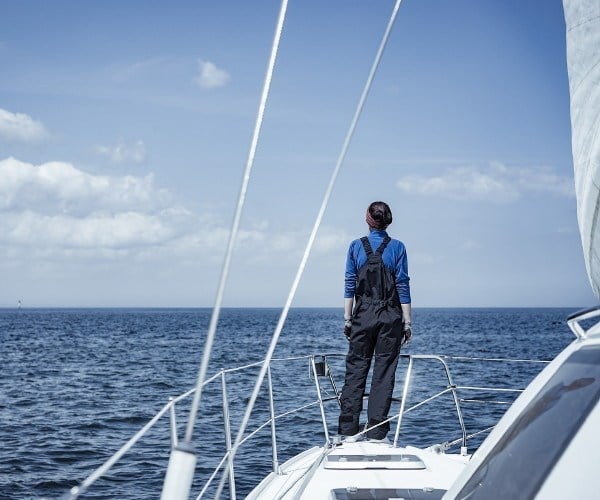 The best places to see whales — including Humpbacks, Orcas, Blue, Fin, Bryde’s, short-finned Pilot whales, and Sperm whales in pods of more than 20 — is around Isabela, Fernandina, Wolf, and Darwin.
The best places to see whales — including Humpbacks, Orcas, Blue, Fin, Bryde’s, short-finned Pilot whales, and Sperm whales in pods of more than 20 — is around Isabela, Fernandina, Wolf, and Darwin.
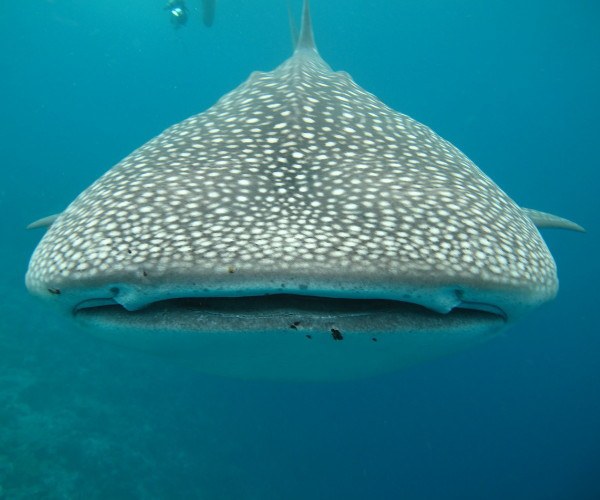 Whale sharks also can be viewed in the Galapagos, and this naturally curious species will often approach boats to investigate and give whale-watchers unexpected up-close encounters. Of course, you won’t want to miss the rest of the destination that top’s more people’s bucket lists than any other in the world.
Whale-watching season: Year-round (but especially July through November)
5. Mancora, Peru
In the northern waters of Peru’s Pacific Coast, a magical current called Humboldt allows for an incredibly biodiverse ecosystem. The extreme cold of the Humboldt current collides with the warm Pacific to create an ideal habitat for an array of oceanic species. In these Peruvian waters you’ll find a whopping 32 species of whales and dolphins, which include orcas, Bryde’s whales, pantropical spotted dolphins, dusky dolphins, and Humpback whales.
Whale sharks also can be viewed in the Galapagos, and this naturally curious species will often approach boats to investigate and give whale-watchers unexpected up-close encounters. Of course, you won’t want to miss the rest of the destination that top’s more people’s bucket lists than any other in the world.
Whale-watching season: Year-round (but especially July through November)
5. Mancora, Peru
In the northern waters of Peru’s Pacific Coast, a magical current called Humboldt allows for an incredibly biodiverse ecosystem. The extreme cold of the Humboldt current collides with the warm Pacific to create an ideal habitat for an array of oceanic species. In these Peruvian waters you’ll find a whopping 32 species of whales and dolphins, which include orcas, Bryde’s whales, pantropical spotted dolphins, dusky dolphins, and Humpback whales.
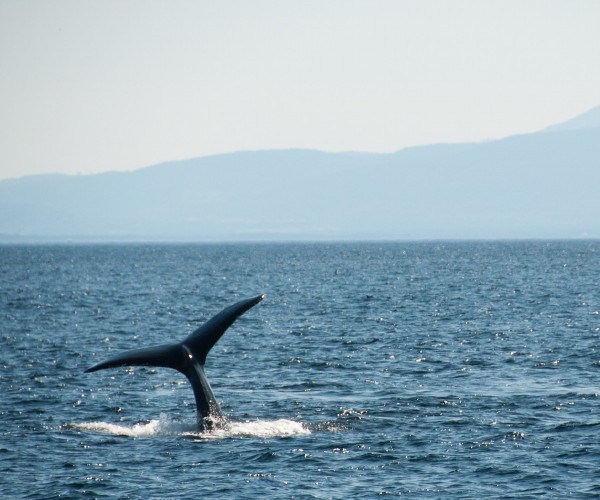 In fact, thousands of Humpback whales come to breed off the country’s north coast between mid-July and early November, with the small fishing village of Mancora being the best spot to catch a glimpse of these genuinely majestic souls as they splash and play with their newborns. If you’re lucky, you might see a Humpback from the shore, but a boat tour will get you far closer. Many tour boats will also offer a listen on their hydrophone to hear the whales’ hauntingly beautiful calls.
In fact, thousands of Humpback whales come to breed off the country’s north coast between mid-July and early November, with the small fishing village of Mancora being the best spot to catch a glimpse of these genuinely majestic souls as they splash and play with their newborns. If you’re lucky, you might see a Humpback from the shore, but a boat tour will get you far closer. Many tour boats will also offer a listen on their hydrophone to hear the whales’ hauntingly beautiful calls.
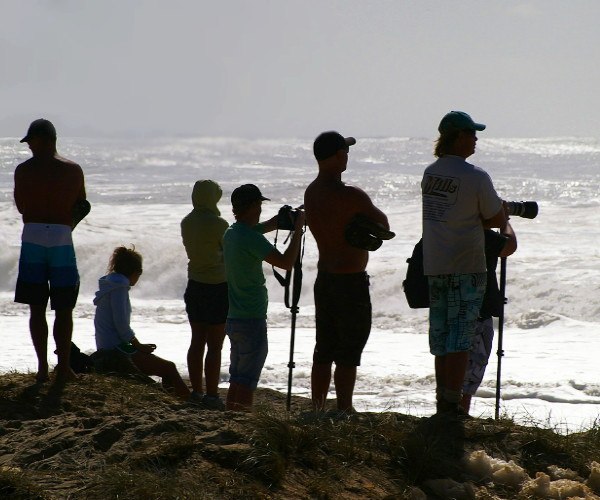 Whale-watching season: Mid-July to early November
6. Valdez Peninsula / Puerto Madryn, Argentina
At the end of the day, Argentina reigns as South America’s leading whale-watching destination, and there’s only one area in Argentina to really get a good whale experience: Around the Valdez Peninsular and the nearby small town of Puerto Madryn. Offering a spectacular sight that few other wildlife sightings can match, the spotlight is always on Southern right whales, which arrive by the hundreds from Antarctica and can be seen in the waters off the peninsula annually between June and December. At the height of the whale watching season, these 60-foot-long 50-ton giants of the southern seas congregate in this area to mate as well as birth and nurse their calves.
Whale-watching season: Mid-July to early November
6. Valdez Peninsula / Puerto Madryn, Argentina
At the end of the day, Argentina reigns as South America’s leading whale-watching destination, and there’s only one area in Argentina to really get a good whale experience: Around the Valdez Peninsular and the nearby small town of Puerto Madryn. Offering a spectacular sight that few other wildlife sightings can match, the spotlight is always on Southern right whales, which arrive by the hundreds from Antarctica and can be seen in the waters off the peninsula annually between June and December. At the height of the whale watching season, these 60-foot-long 50-ton giants of the southern seas congregate in this area to mate as well as birth and nurse their calves.
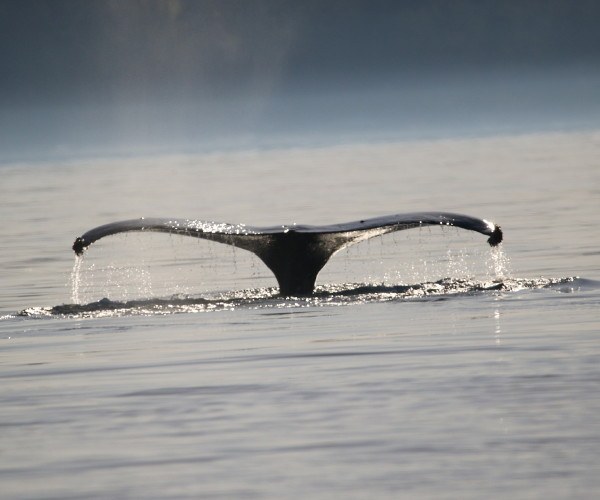 Featuring dark, grayish and blackish bodies, heavy and with no dorsal fins, Southern right whales can even be seen within just feet of the shore. Still, even closer encounters are experienced on boat tours and land excursions, which provide the added opportunity to witness lumbering elephant seals, curious sea lions and expansive colonies of Magellan penguins.
Featuring dark, grayish and blackish bodies, heavy and with no dorsal fins, Southern right whales can even be seen within just feet of the shore. Still, even closer encounters are experienced on boat tours and land excursions, which provide the added opportunity to witness lumbering elephant seals, curious sea lions and expansive colonies of Magellan penguins.
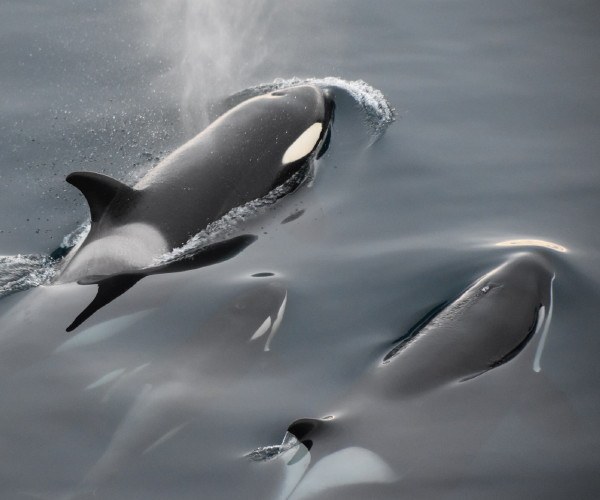 In addition to whale watching, Valdes Peninsula remains one of the most exciting places to observe playful orcas in the wild, due to the abundance of prey, particularly seal pups. The best time to witness orcas up close as they hunt is during October and November, when they venture closer to shore to feed on sea lion pups. For those with the stomach, you marvel at the spectacle of Killer Whales launching themselves onto the sand to attack their prey, often unsuspecting seals which are frolicking in the shallow waters. This is an unusual hunting method that doesn’t occur anywhere else, which you can watch between December and April from the sand dunes – though you might not believe your eyes.
As a base for such adventure on Patagonia’s rugged Peninsula Valdes, head to the coastal town of Puerto Madryn, where it’s even possible to wander along the shoreline and witness young whale mothers with their calves only twenty feet away in the water!
Whale-watching season: June to December
In addition to whale watching, Valdes Peninsula remains one of the most exciting places to observe playful orcas in the wild, due to the abundance of prey, particularly seal pups. The best time to witness orcas up close as they hunt is during October and November, when they venture closer to shore to feed on sea lion pups. For those with the stomach, you marvel at the spectacle of Killer Whales launching themselves onto the sand to attack their prey, often unsuspecting seals which are frolicking in the shallow waters. This is an unusual hunting method that doesn’t occur anywhere else, which you can watch between December and April from the sand dunes – though you might not believe your eyes.
As a base for such adventure on Patagonia’s rugged Peninsula Valdes, head to the coastal town of Puerto Madryn, where it’s even possible to wander along the shoreline and witness young whale mothers with their calves only twenty feet away in the water!
Whale-watching season: June to December
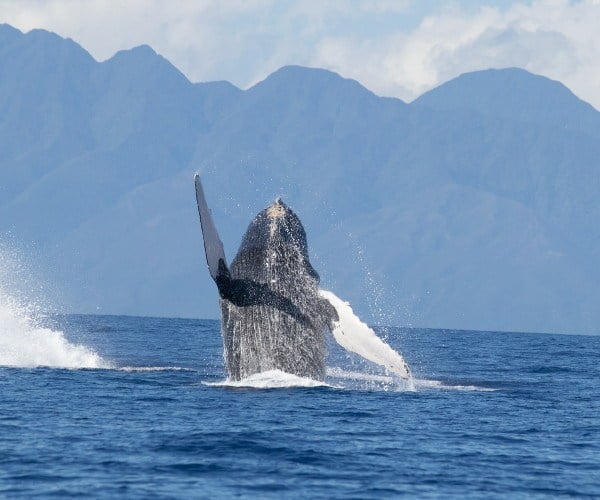 Nothing quite prepares you for the sheer awe of watching an enormous whale swimming right in front of you, and that’s precisely what you’ll experience on whale-watching tours throughout South America. Just prepare yourself to see one or two of them breach the waters – the holy grail of whale sightings. It’s a once-in-a-lifetime sight to behold!
Alfonso Tandazo is President and CEO at Surtrek Tour Operator. Surtrek Tour Operator is a well-established firm, specializing in custom-designed luxury tours in Ecuador, the Galapagos and throughout the rest of South America.
If you would like to be a guest blogger on A Luxury Travel Blog in order to raise your profile, please contact us.
Nothing quite prepares you for the sheer awe of watching an enormous whale swimming right in front of you, and that’s precisely what you’ll experience on whale-watching tours throughout South America. Just prepare yourself to see one or two of them breach the waters – the holy grail of whale sightings. It’s a once-in-a-lifetime sight to behold!
Alfonso Tandazo is President and CEO at Surtrek Tour Operator. Surtrek Tour Operator is a well-established firm, specializing in custom-designed luxury tours in Ecuador, the Galapagos and throughout the rest of South America.
If you would like to be a guest blogger on A Luxury Travel Blog in order to raise your profile, please contact us.Did you enjoy this article?
Receive similar content direct to your inbox.



I’ve tried whale-watching off South Africa and Sri Lanka without luck so willing to give South Smerica a try.
Great pictures but they’re never going to capture what it’s like seeing a whale in the flesh, one of nature’s great sights.
A timely reminder that I still haven’t ticked off whale watching on my bucket list!